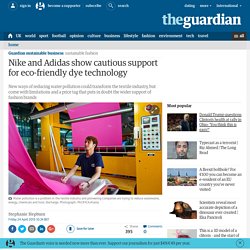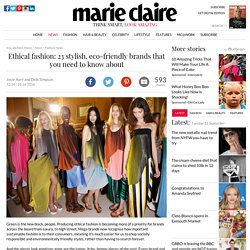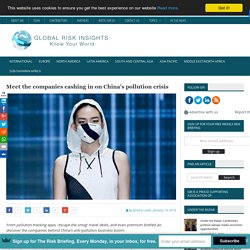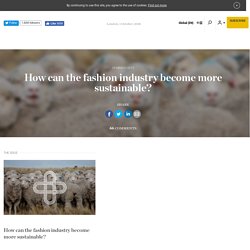

Nike and Adidas show cautious support for eco-friendly dye technology. It has been a significant step forward for the textile sector.

Up until now the effluent from dye houses that can often be seen in rivers flowing through the textile manufacturing areas of India, China and elsewhere is a result of unabsorbed dyes, chemicals and heavy salts that are used during the dyeing process. A number of companies, DyeCoo, ColorZen and AirDye have set out to address this pollution by designing waterless dye technology. The result is a reduction in wastewater, energy, chemicals and toxic discharge to such a degree that it could revolutionise the textile industry. Major brands including Nike and Adidas have been integrating waterless dye technologies into their product lines, but costs and limitations have experts in the textile industry worried that the support will not last. “Right now there is very low uptake of use of these technologies,” says Andrew Filarowski, technical director at Society of Dyers and Colourists. The technology The price tag The limitations. The Best Ethical Fashion Brands. What: Fat Face has a company-wide Code of Conduct where all factories that produce their goods must abide by as well as working with suppliers and other organizations to make sure their workers are treated fairly.

What: Your new one-stop shop for ethically made wedding wear, Minna describes itself as an ‘Eco Luxe’ brand. With wedding dresses, veils and bridesmaid dresses made from sustainable, organic, recycled and locally produced textiles, you can dress your whole wedding party without feeling guilty. What: Worn by Kate Middleton, Mirabelle makes handmade fair trade jewellery as well as a British Made collection.
Think pretty pendants at good prices. Wear: Hammered pendant, £69 What: Committed to ethical trading, Monsoon’s ethical compliance team regularly checks that their factories are abiding by its Code of Conduct which sets out minimum requirements on working conditions, pay and employment rights. Russian mink farms where thousands are slaughtered and left to rot to make $1... These disturbing pictures expose the macabre truth about the fur farms in Russia and China which supply the fashion market in the world's leading cities, including London, Paris and New York.

Across ten time zones, the images show the reality of mink and sable gulags - many set up during the harsh Communist past - where prized animals are bred for slaughter, bringing in millions of pounds to the Russian economy every single year. An investigation by MailOnline also reveals the appalling conditions in which wild animals, including different types of fox, are captured and killed, from being skinned alive to being poisoned by the faeces in the air, and reveals the heartless farm owners who can't see beyond their profits. And there are certainly profits to be made: a sable 'blanket' sold for a record-breaking $900,000 to a royal just a few years ago, while a coat at last year's Fendi show was rumoured to have a price tag of $1.2million. Animals forced to suffer and starve in Russian fur farm. Meet the companies cashing in on China’s pollution crisis.
From pollution tracking apps, ‘escape the smog’ travel deals, and even premium bottled air, discover the companies behind China’s anti-pollution business boom.

Much has been written about China’s pollution crisis. This state of affairs has led to myriad problems for China, as the government seeks to promote more sustainable growth. In the midst of all this, the severity of China’s pollution nightmare is inspiring corporate dreams, as both multinationals and a slew of start-ups cash in. Even China’s fashion industry is incorporating gas masks as the haute couture accessory of the year. This boom has already produced China’s first green-tech billionaires: Zhang Kaiyuan, chairman of Beijing SPC Environmental Protection Tech. China is home to many of the world’s most polluted cities, notably Beijing where “Chinese scientists have warned that toxic air pollution is now so bad that it resembles a nuclear winter.” Pollution forecasting a major growth industry Escaping the smog. Stella McCartney: Change Agent. LONDON, United Kingdom — In a nondescript building tucked away on a quiet street in West London, Stella McCartney and her team are comparing the properties of a real leather shoe to the various non-leather swatches being considered for her brand’s Winter 2015 shoe collection.

McCartney is wearing a cream blouse, open at the neck, with faded blue jeans and non-leather boots. Pinned up against the wall are boards labeled: “Heels,” “Mules,” and “Cutouts.” A large white table is scattered with moulds, lasts and uppers – as well as scissors, ID cards, empty glasses and a partially-eaten package of organic dark chocolate. Women of differing ages, ethnicities and body types come in and out of the room with a constant flow of new ideas and creative references while McCartney acts as a kind of real-time editor, deciding what colours, materials and shapes feel right for the upcoming season. Stella's Sustainability Commitments | Source: BoF At this point, McCartney turns to me, a fly on the wall.